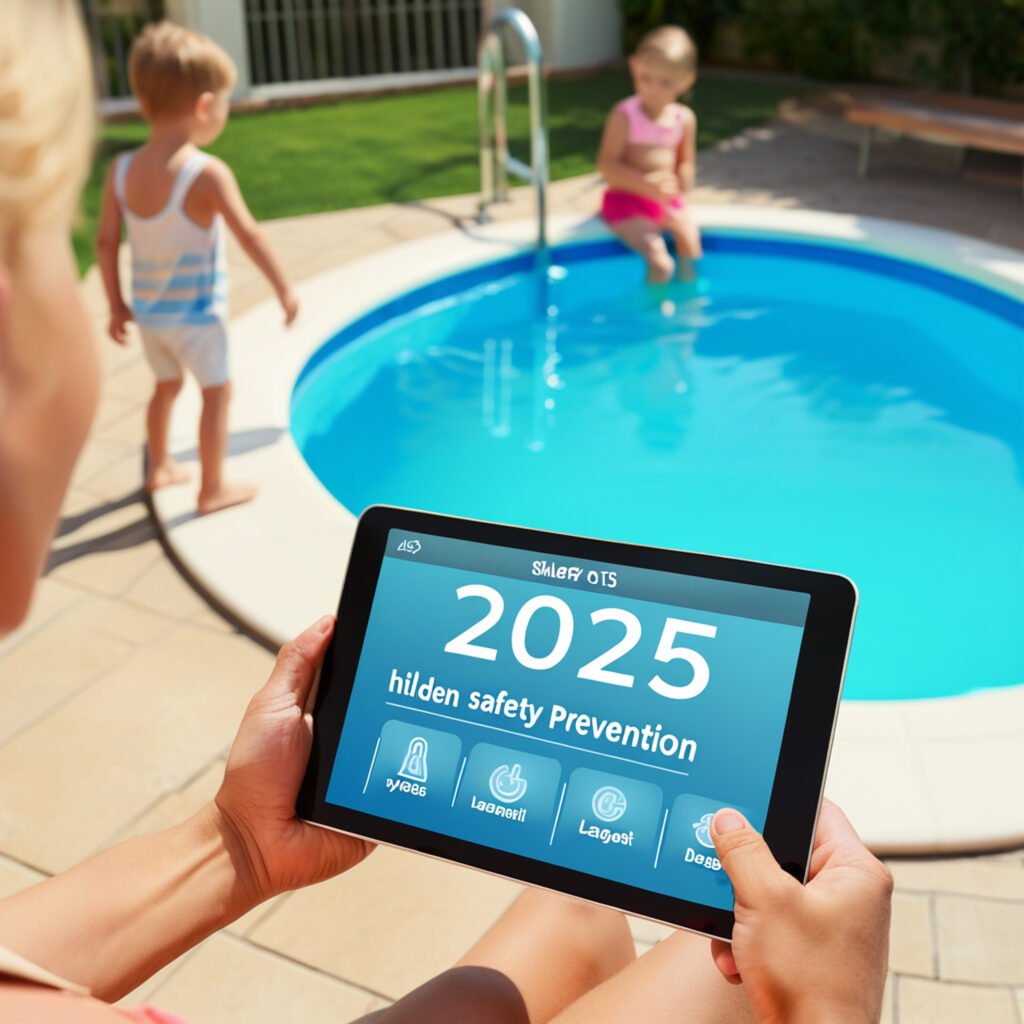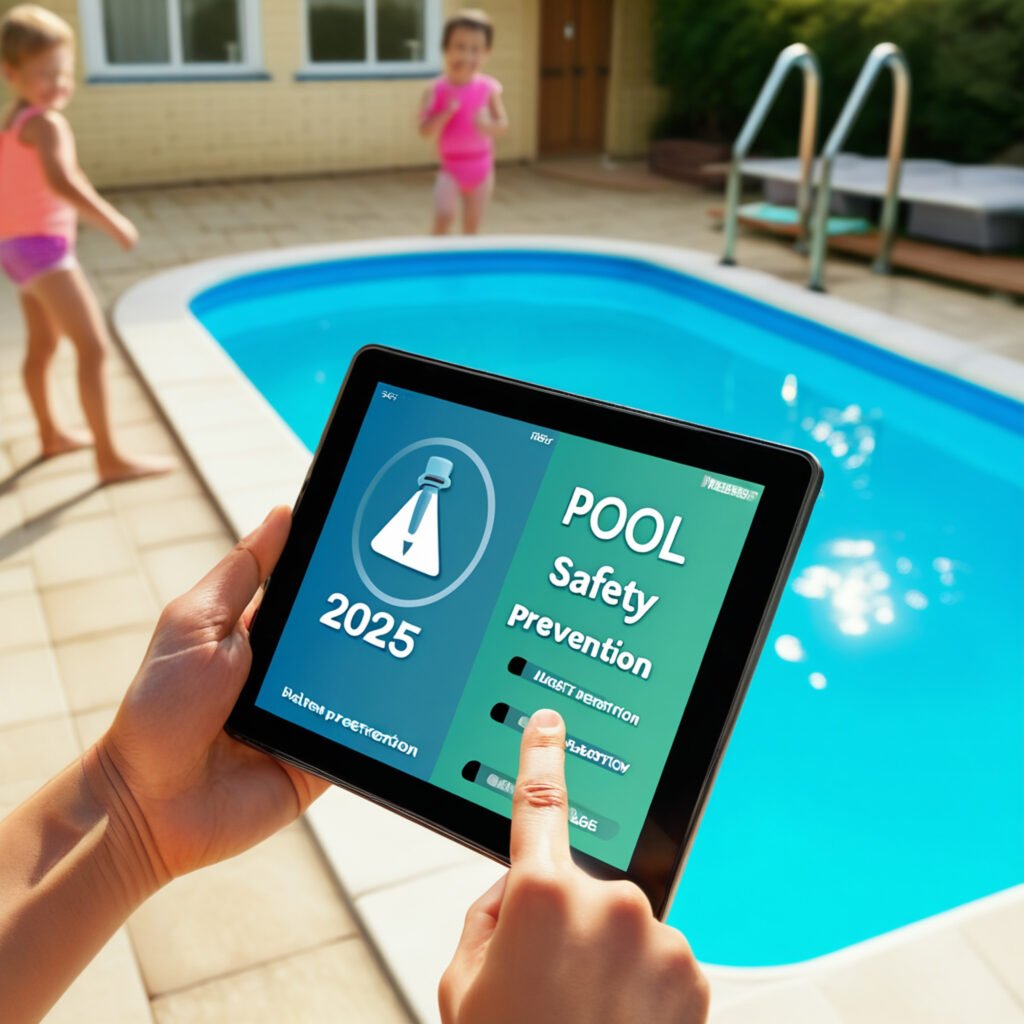Swimming pool risks pose greater dangers than most homeowners understand. Most drownings in children 4 and under happen in home swimming pools. Nearly 70% of these children were not expected to be at or in the pool when found[-2]. The statistics reveal that 46% of these children were last seen inside the house[-2].
Families invest in swimming pool safety equipment, yet preventable tragedies still occur. 58% of drownings among children under 4 occurred in pools at their own homes between 2013 and 2015[-2]. Pool dangers arise from what experts call the #1 pool safety mistake – homeowners fail to secure their pools after use. Parents must supervise their children around pools, but supervision alone cannot guarantee safety.
Let’s get into why pool safety systems fail in this piece. We’ll show you the most effective safety measures and give you the useful steps to protect your family from these preventable accidents.
Why pool safety systems fail more often than you think

Pool owners invest in safety measures of all sizes but still face risks because they don’t fully understand how these systems work. A pool safety system’s effectiveness depends on multiple connected factors that most people overlook.
False sense of security from partial measures
Pool owners trust individual safety devices too much without knowing their limits. To cite an instance, pool alarms work only with proper installation and regular testing—yet homeowners just place them in the pool without checking if they work. Water wings and floaties create dangerous misconceptions, with 66% of parents believing these devices keep children safe in water. Safety experts don’t recognize them as reliable flotation devices.
Pool covers and barriers save lives, but they make people complacent about other vital safety measures. This partial protection becomes dangerous when parents relax their watchfulness and assume a single safety measure keeps everyone safe.
Overreliance on adult supervision alone
Adult supervision alone won’t prevent accidents. 88% of child drownings happen with at least one adult present, and half occur within 25 yards of a parent or other adult. Adults practice what experts call “non-active supervision”—they’re physically there but mentally absent due to conversations, phones, or other distractions.
Brief moments of inattention create the highest risk periods. Parents need constant and undivided attention because answering a phone call or getting a towel gives enough time for an accident.
Lack of awareness about silent drowning
Movies show drowning as dramatic splashing. In stark comparison to this, real drowning happens fast and quietly—often within 30 seconds. Children in trouble can’t call for help or wave their arms as they struggle to keep their heads above water.
People don’t know about drowning complications that can occur after a child leaves the pool. Secondary drowning signs might appear later, so parents need to stay alert for 24 hours after any water incident.
Drowning remains the top cause of unintentional injury death for children ages 1-4. 70% of toddler drownings happen during non-swim time, when nobody expects children to be in the water. Understanding these overlooked aspects helps create better pool safety systems that work.
The most overlooked physical barriers
Physical barriers serve as your best defense against pool accidents. Most homeowners make mistakes during installation that create dangerous gaps in protection.
Why fences are still the #1 defense
A four-sided isolation fence that completely separates the pool from the house and yard reduces a child’s drowning risk by 83% compared to three-sided property fencing. This protection works because it blocks access from all directions, especially since 70% of drownings among young children happen at a time when they aren’t swimming. The fence height should reach at least 48″-60″ high (based on local requirements) with no openings larger than 1¾ inches.
Common mistakes in pool fencing
Pool safety gets compromised when homeowners install fences that are too short or leave gaps underneath where children can crawl through. Gates without self-closing and self-latching mechanisms often stay open by accident. Additional mistakes include selecting materials that corrode from pool chemicals, not following local building codes, and placing climbing hazards like furniture or plants near fences.
How to choose the right pool cover
Safety covers must meet ASTM International standard F1346-91. You can choose between two options: mesh safety covers that let water drain while catching debris, and solid safety covers that block everything completely. Regular maintenance is vital—you should remove collected rainwater and check for damage quickly.
Alarms that actually work
Effective pool alarms include:
- Subsurface alarms that detect water disturbance
- Gate alarms that sound when pool access points open
- Door/window alarms that activate within 7 seconds
Door alarms should sound at least 30 seconds at 85+ decibels to work properly.
The role of window and door locks
House walls that serve as pool barriers need audible alarms on all access doors. These doors should close by themselves and have latches positioned at least 54 inches above the ground—out of children’s reach. Local laws require these safety measures because they stop children from reaching the pool area without adults knowing.
Behavioral gaps that increase swimming pool risks
Supervision failures are the most overlooked cause of pool tragedies. Even the most detailed safety equipment can’t make up for gaps in human behavior.
Inconsistent supervision routines
Research shows that lack of supervision contributed to 94% of fatal child drowning cases where supervision details were known. The numbers paint a stark picture – submersion incidents without active adult supervision were 24 times more likely to end fatally. Many caregivers think they’re being watchful enough while they step away for a moment.
The myth of ‘just a minute’
The “just a minute” mindset creates deadly accident opportunities. Studies reveal 77% of drownings happened less than five minutes after someone last saw the child, often while the child slept in bed. Children stayed unsupervised for 15.6 minutes on average, but this time was substantially shorter in non-fatal incidents (3.2 minutes) compared to fatal ones (16.1 minutes). Drowning happens quickly and silently, so brief supervision gaps create major risks.
Why assigning a water watcher matters
Group settings often lead to tragedy because people assume others watch the children. A designated water watcher solves this problem – someone who focuses only on monitoring swimmers for 15-20 minutes at a time. This person should be at least 16 years old, able to spot distress signs, trained in CPR, ready with a phone, and free from any distractions.
How distractions lead to accidents
Pool accidents stem from common distractions – indoor household duties cause almost one-third of child drownings, socializing accounts for 18% of cases, and phone use leads to 9% of incidents. Household chores pose the highest risk, especially when you have bathtubs nearby. Simple tasks like getting forgotten items, finishing laundry, or vacuuming create dangerous gaps in supervision.
Essential training and emergency readiness

Pool safety systems need emergency preparation as a vital layer of protection, yet many owners don’t think about these skills until something goes wrong. Accidents can happen even with perfect barriers and supervision. Your readiness becomes the last line of defense against tragedy.
CPR training for pool owners
CPR knowledge will give a much better chance of survival during emergencies. Pool owners need CPR training to respond quickly to drowning incidents. The American Red Cross or American Heart Association certification will give you the confidence to act when those first minutes matter most. Your quick and informed response could make the difference between life and death.
Teaching kids simple water safety
Kids learn water safety best through fun, age-appropriate lessons. The Red Cross WHALE Tales program uses short videos with catchy rhymes to teach water safety. These lessons cover simple rules like “Swim as a Pair With a Lifeguard There” and “Reach or Throw, Don’t Go”. You can also teach safety through stories, games, or visual charts placed at your child’s eye level.
Importance of swim lessons from age 1
The American Academy of Pediatrics has found that formal swim lessons starting at age 1 reduce drowning risk by a lot—especially for naturally curious toddlers. Early lessons help build skills like breath control, floating, and safe water entry/exit. Note that even strong swimmers can get into trouble, so supervision remains vital, whatever their swimming ability.
Keeping rescue equipment nearby
Your pool area needs this safety equipment available:
- A non-telescopic reaching pole (12-16 feet long) with attached shepherd’s crook
- US Coast Guard-approved ring buoy (15-24 inches in diameter) with throwing rope
- Cell phone for emergency calls
Keep these items where you can grab them quickly but out of children’s reach.
Conclusion
Pool safety needs more than good intentions—you need a complete system with multiple layers of protection. This piece shows how partial measures create dangerous gaps in safety. Single-solution approaches can’t protect against drowning risks well enough.
Physical barriers work as your first line of defense. Four-sided isolation fencing cuts drowning risk by 83%, and well-managed safety covers and working alarms add vital extra protection. Despite that, even the best equipment fails without proper behavior.
Statistics show that lack of supervision leads to 94% of child drownings, so having specific water watchers is essential in group settings. The “just a minute” mindset creates dangerous situations, especially when drowning happens quietly and faster—usually within seconds.
Emergency preparedness could save lives when other measures fail. CPR certification, teaching water safety to kids based on their age, and professional swim lessons starting at age 1 all lower the risk substantially. Having rescue equipment available helps you respond quickly during emergencies.
These sobering statistics remind us that pool safety needs full commitment. Each layer—physical barriers, steady supervision, and emergency readiness—works as part of one system. One part might fail, but multiple backup systems provide complete protection.
Your family should enjoy a pool without hidden dangers. Setting up a full safety system takes work, but knowing you’ve handled risks from every angle brings peace of mind. No family should face tragedy from preventable pool accidents when solutions are accessible to more people.
